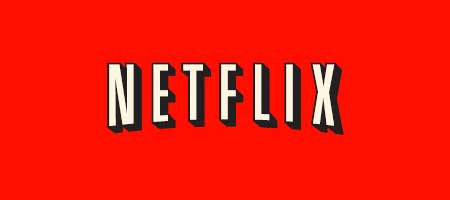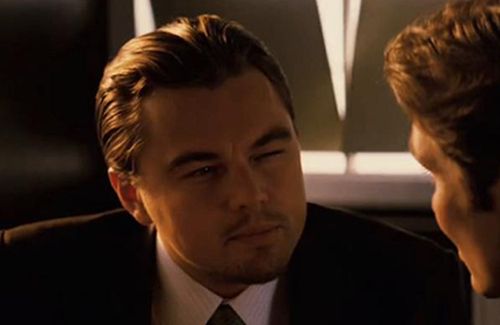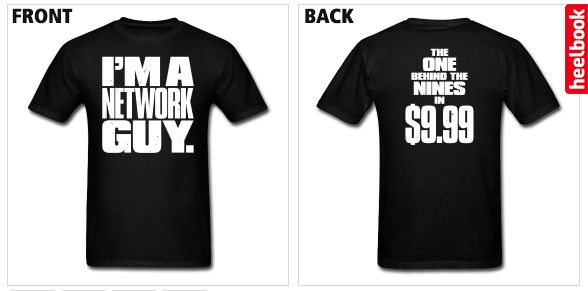6 Reasons Why The WWE Network Isn’t A Success
From the wrestling fan’s perspective, it’s an all-around steal, if it works like advertised. $9.99 to watch all the wrestling content you can handle is the best offer a wrestling fan will get.
However, from a business perspective, the general consensus seems to be that the words “success” and “WWE Network” are not getting along backstage.
Taking into account that I have the benefit of hindsight but lack the serious, down and dirty financial data, this is my look at why the WWE Network is far from the Eagle they hyped, and only pulling off a Bogey:
1. Unrealistic Expectations
Early expectations from WWE’s consumer research called for a subscriber base of 2.5 million people. While I do recognize I have the benefit of hindsight, the benefit of realizing that, while there are market benchmarks like Netflix, they seriously lack information on the most important thing for an accurate projection: wrestling fan’s actions and behaviors when presented with a 9.99/month offer for WWE content.
While I don’t doubt a lot of work went into the consumer research, the fact is, in such a new endeavour, consumer research has to be looked at as little more than a nice-to-have, but mostly unreliable, goodie.
Which can be a pain, when you have markets and shareholders waiting for you to crunch your numbers so they can decide how much your stock is worth. I should mention that at the peak of the Network’s hype, WWE stock price was over the 30-dolllar mark. In May, it was 3 times less than that. It’s now at 15.

From an early 2.5 million prediction, WWE now seems to be scratching and clawing toward their objective of 1 million subscribers until the end of the year, with a substantial number of cancellations thus far.
With such a high bar set from the beginning, it becomes clear WWE’s expectations and actual reality match about as much as Paul Heyman and Cesaro.
2. The Pricing
As I wrote in the very first phrase of this article, the Network subscription value is an absolute win for fans, especially if you’re a pay-per-view buyer.
In fact, if anything, the product is dramatically underpriced from the company’s perspective.
With monthly PPV offers that range from $45 to $60, WWE effectively cuts itself off from the difference between their share of the PPV spoils (usually 50%, with the other half going to the PPV providers, like ComCast) and the WWE Network price of… 9… 99.
While, again, an educated and consistent wrestling consumer will jump at this offer, I can’t help but feel WWE shoots itself in the foot here, by telling a lot of its consumers that they can now save a bunch of money by getting the Network, when they were willing to pay 4 to 5 times over.
In short, WWE is gambling on getting more money from all the new subscriptions than it’ll lose in PPV revenue.
I don’t have the benefit of knowing all the consumer data in those big WWE servers, but it sounds like a major gamble. And an unwarranted one. Which brings me to my next point.
3. WWE didn’t learn from its competitors
Like the one I just mentioned, the WWE Network ends up with a few shortcomings that comparable competitors don’t present:
UFC Fight Pass

UFC Fight Pass is, for lack of a better term, the UFC Network. It features both past events and exclusive content, including documentaries, talk-show-type segments and fight cards only available to subscribers, a lot of which are headlined by big-time players like Alexander Gustafsson and Michael Bisping.
But one thing UFC Fight Pass doesn’t do is offer the upcoming PPVs. They are a separate deal altogether. The rationale behind this is the one diametrically opposed to WWE’s “let’s bundle everything into our Network”. UFC president Dana White and company know fans are willing to shell out the big bucks if the cards are well-built and properly headlined. So why cut yourself off from money you’re already getting from your buyers in the way they’re accustomed to giving it to you?
Netflix

While UFC Fight Pass was launched on a similar timetable to the WWE Network, Netflix is an Internet fixture and a very successful one at that. One lesson to be learned from the California-based company is the ability to have the same account to be used on different computers for a substantially low amount. WWE did not seem to foresee this in their initial offer. Meaning: you may be losing money because a group of friends is using the same account.
Another Netflix lesson is the no-commitment rule. You can leave anytime. To me, that shows you believe in your product and you believe your consumer should be 100% free to just say “You know what? It’s not for me”. And, in today’s world, that’s a hook: you can try it on and, if it’s not for you, no worries.
While WWE did offer two 1-week trials, I don’t feel that equates to Netflix’s perpetual no-commitment rule. While $9.99 probably won’t break you, a smart consumer will wonder about getting midway through his 6-month commitment, having seen all the content from the past he can and knowing he’s gotten his fix. But he still has to shell out 3 more monthly payments. To me, these thoughts will be reason for hesitation when signing up.
It’s also worth mentioning that, while WWE does have a 6-month commitment in place, it is circumventable. PayPal users can cancel their payments and, I suppose, if you try hard enough, you can get your bank to do the same (though, for legal reasons, I’d advise you think really hard before going there).
In my heel opinion, this means WWE enforces a commitment policy that drives hesitation and, on the back end, only has limited ability to enforce it. In Zombieland terminology, this is called the Double Tap: you lose prospects who never try out the service and you lose paying customers for not enforcing your own commitment period. Double Tap.
WWE’s most recent offering of 19.99 for a one-month-only subscription is a step in the right direction but is obviously still not the same as Netflix’s approach.
Streams and Torrents: The Wrestling Fan’s Safety Valve
Let’s start from this statement: WWE’s primary target for the Network is an educated fan, who loves wrestling, is probably nostalgic and is very comfortable with watching content and making purchases online.
Here’s the snag: the Internet has an assortment of resources, that will make premium content available to you for free. If you know where to look.
And wrestling fans know where to look.
“Live streams are available on PPV day and are quickly available via torrents” – I told myself, under a pseudonym, for legal reasons.
And, while anyone can forgive the occasional “Buffering” message on a YouTube video, things get complicated when your paid service gives you the same frustrating message.
Let’s say you’re a die-hard wrestling fan. You’re a WrestlingInc, LordsOfPain regular. You drool at the prospect of more Rollins vs. Ambrose. You laugh your ass off at Botchamania. You know, the works.
You subscribe to the Network for Summerslam. You miss the first match’s finish and the stream still isn’t up to par by the second match. 5 minutes later, you realize the pirate stream is more reliable. Or so I’m told.
While I’ll admit some of the more technological stuff is beyond some fans, who just don’t have the patience to resort to these tools, wrestling fans are already very educated and they’ll only get even more so. Free options are available and if WWE’s stream doesn’t cut it, ads-filled streams will take your order. Or, the next morning, you can just go spend your holiday in the *cough* Bay Of Pirates *cough*.
4. WWE has Booked Itself Into A Corner
By opening with such an aggressive offer, WWE left itself little to no leeway. And no Undo button.
To make more money from the Network, WWE needs one or two of these things: more subscribers or a higher price tag (the latter runs the obvious risk of alienating part of the buying audience).
If the Network’s revenue doesn’t grow to expected levels, then what? Does WWE make its PPVs a separate offer, even for Network subscribers, in the neighborhood of 5-10 extra dollars to see a PPV? Does it increase the monthly subscription value?
If the international expansion doesn’t cut it, all roads would lead to a higher price point. And after months of hard selling that 9.99 insane value with all PPVs and exclusive content included, the backlash from such a vocal crowd won’t do WWE any favors.
Again, with the benefit of hindsight, WWE could have done this in reverse. Start on a higher price point, maybe even autonomize some of the PPVs from the standard Network subscription (while still offering them to signees at a much lower price) and, if that didn’t provide results, mark your prices down.
You know what? I’ll implement that strategy myself: starting tomorrow, it’s 15% OFF all heelbook shirts (including the one below) until September 2nd. Promo code SHIRTS15 when you check out and a bonus download when you message me your order number.
See, Vince? Simple. Ah, but I digress. Moving on!
5. There’s Too Much WWE on TV (And Most Isn’t Very Good)
WWE’s biggest selling platform is their TV programming. Every week we’re “pampered” with cheesy, troll-level hard sells of the Network. So it’s a pretty safe bet wrestling fans are more than informed of the Network’s existence, its content and its price.
Unfortunately, these plugs are inserted into shows that are, for the most part, missable. The WWE product, while maintaining noteworthy performances, isn’t doing right by its overall show quality, which is especially concerning when you consider the amount of weekly WWE content.
Even though we could make the case for WWE’s talent pool never having been deeper, the shows are riddled with sub-par microphone work, thanks to heavily-scripted material; the storylines tend to evolve in consistently predictable ways and the level of repetition in match lineup is staggering. And, every week, you get Raw, Smackdown, Main Event, pre-shows, post-shows, Aftermaths, Backstage Passes, Superstars,…
… which would be OK if the product was killing it. Well, it isn’t.
And because it isn’t, it’s unquestionably harder to sell a fan on the Network. Some are no longer watching and the ones that are may only consider a short fling with the Network, to get their hands on some of the classic content. And then head out, because they feel the current stuff just isn’t up to their personal par.
Underwhelming and overplayed is not where you want to be.
6. Heads In The Sand
I’ve read a few exchanges between WWE officials and shareholders, prospective shareholders and analysts. Some are puzzling. I’ll give you an example.
On the heels of Triple H’s very first ad nauseum plug of the WWE Network’s 9.99 price tag, both he and Stephanie joined CFO George Barrios in a New York investor conference, headed by business analyst Laura Martin.
Fielding questions from the group, a lot of UFC comparisons were made, to which the power couple responded. After reading their replies on Cageside Seats, I don’t know if I should laugh or cry.
I picked 2 quotes to dissect and illustrate my puzzlement:
Gem #1 – Triple H: “[UFC] aren’t really a competitor to us”
I could take the long road on this one, but I’ll go short.
1 of UFC’s 2 biggest draws of all-time is Brock Lesnar (the other being Georges St-Pierre) and his drawing power carried over from pro wrestling. If it carried over, it’s only reasonable to conclude that some people were watching both and some started watching UFC/MMA when Brock got into it.
If people are watching and buying both WWE and UFC products, you’re competing. In the strictest sense.
Gem #2 – Steph: “We strategically build all of our Superstars and characters (…) and make them these megastars, it’s all very intentional and you’re guaranteed to get your money’s worth.”
I offer three thoughts.
One: If you watch UFC, you know they also build their fighters up strategically. Fighters are paired up based on their track record, their performance level, their career situation (newcomer, rising star, top contender, on the downside,…) and their drawing power. And, gosh, wouldn’t you know, “it’s all very intentional” too.
Two: There was very little of strategic when WWE used Daniel Bryan’s rise to mega popularity to merely feed Randy Orton’s heel championship run from Summerslam 2013 onward. After months of trying to make that stick, it became evident fans weren’t really getting into WWE’s “strategy”, they reversed course weeks before Wrestlemania to “strategically” give Bryan the championship. Strategy, everyone, strategy.
Three: When you book PPVs that end with non-finishes and overbooked finishes (again, look at all the Orton vs. Bryan PPV finishes), frequently repeat your PPV matches on free TV, and wrap up feuds on aforementioned TV instead of where people paid to see storylines conclude, saying “you’re guaranteed to make your money’s worth” makes me do the DiCaprio squint:

While I don’t know if Triple H and Stephanie were speaking wholeheartedly or doing their best to convince their prospective investors with more-general-than-detailed information, I do have a hard time reading these quotes and finding them genuine, given the ease with which one can pick them apart.
If these exchanges illustrate internal WWE thinking, it’s hard to really grasp how someone who looks at their competition in this manner can be equipped to circumvent the bumps currently facing the Network. And saying these things out loud to investors…
Hopefully, this isn’t their real depth of knowledge and understanding of the content business and is more smoke screen than anything else, especially given the recent releases and other cost-cutting measures, which are attributed to budget-balancing brought upon by the Network.
How about you, what’s your take? Let me know where you stand in the comments.

